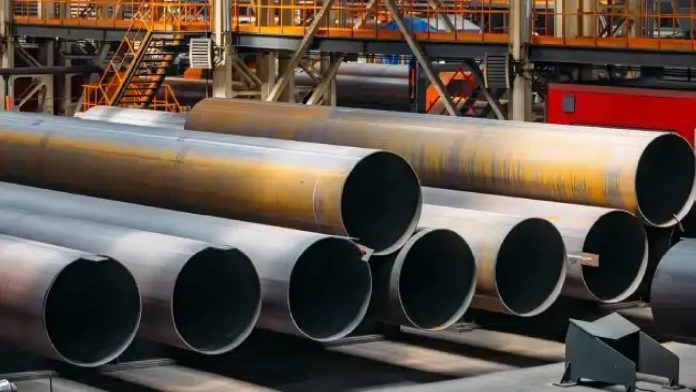Carbon steel is a very common industrial and building material. It is solid, robust, and cheap. Engineers usually consider the density of carbon steel to get to know more about it. Density is the weight of the steel in a unit of measurement. Tuspipe gives clear information about the Carbon steel density formula and classification table. This makes it easier to compare and select the right type of steel to be used in any given project by the engineers and the buyers.
What Density Means
The weight of a given space is its density. Density means how much “stuff” is packed into a certain space. Simply, it is the description of the weight of something in relation to its size. The density is typically 7.07 to 7.85 grams per cubic centimeter with carbon steel. This implies that even the smallest piece of carbon steel will never be light in weight. The density varies a little with the content of carbon in the steel. Hat treatment or coating may also influence the density. The density is useful in determining the weight of pipes, beams, or structures.
Carbon Content and Function
The carbon content alters the strength and weight of steel. Carbon steel is typically classified as low carbon, medium carbon, and high carbon. More carbon will produce stronger steel, but it will be less pliable, as well.
- Low-carbon steel has less than 0.25% carbon.
- Medium-carbon steel contains 0.25 to 0.6 percent carbon.
- High-carbon steel contains 0.6 to 1.5 percent carbon.
The above categories are not so thick either, but the difference in strength and hardness is even greater. So, carbon’s primary function is to control the strength, hardness, and flexibility of steel.
Density Correction Factors
Density correction factors are numbers used to adjust measured density for accuracy.
They help fix changes caused by temperature, pressure, or material makeup. The values of density may vary slightly depending on the condition. Steel can be made to expand due to heat, reducing its density. In cold, steel shrinks and the density increases slightly. Coating with paint or zinc may also alter the overall weight of steel products. Engineers use correction factors to modify these changes. This brings the numbers involved in design or transportation closer to reality. A correction factor brings the value back to the proper density. This makes scientific and industrial measurements more reliable.
Tuspipe’s Classification Table
Tuspipe offers a basic carbon steel classification table according to carbon content. This enables buyers and engineers to compare the options easily.
Carbon Steel Classification Table
|
Type of Steel |
Carbon Content (%) |
Density (g/cm³) |
|
Low Carbon Steel |
≤ 0.25 |
7.85 |
|
Medium Carbon Steel |
0.25 – 0.6 |
7.85 |
|
High Carbon Steel |
0.6 – 1.5 |
7.85 |
|
Alloy Steel |
Varies |
7.07 – 8.05 |
As this table shows, the density is near 7.85 g/cm3 in most carbon steel. Alloy steels containing other alloy elements, such as chromium or nickel, can have a slightly higher or lower density.
Why Density Matters
It is essential to know the density of carbon steel for many reasons. To one, the total weight of pipes, beams, or frames can be found. This may be used in shipping, lifting, and installation of materials. Second, one can apply density when comparing steel to other materials, e.g., aluminum or stainless steel. Lastly, it also aids in safe project planning where weight balance is a factor, such as bridges, towers, or ships.
Using Density in Pipe Design
In the case of carbon steel pipes, the weight is calculated based on density. The density of the steel, multiplied by its volume, can be used to calculate the weight of the pipe. Volume depends on the outer and inner diameters and the length of the pipe. A pipe of 100 millimeters outside diameter, 10millimetersr wall thickness, and 6 meters long will have a volume. This, multiplied by 7.85 g/cm 3,3, gives the weight of the pipe. This assists the transportation and construction planners.
Conclusion
Density is another significant characteristic of carbon steel that enables engineers and purchasers to comprehend the weight, strength, and performance. Even with small changes, carbon steel stays strong and solid. A formula can be used to calculate density: mass/volume. Most carbon steels have densities near 7.85 g/cm. The actual value may be slightly different based on the carbon content, coating, or heat treatments. The Tuspipe classification table allows one to clearly observe the classification of carbon steels as low, medium, and high carbon. This is a clear guide to help in classification, transport, and design planning. Density ensures the projects are safer, stronger, and efficient.












